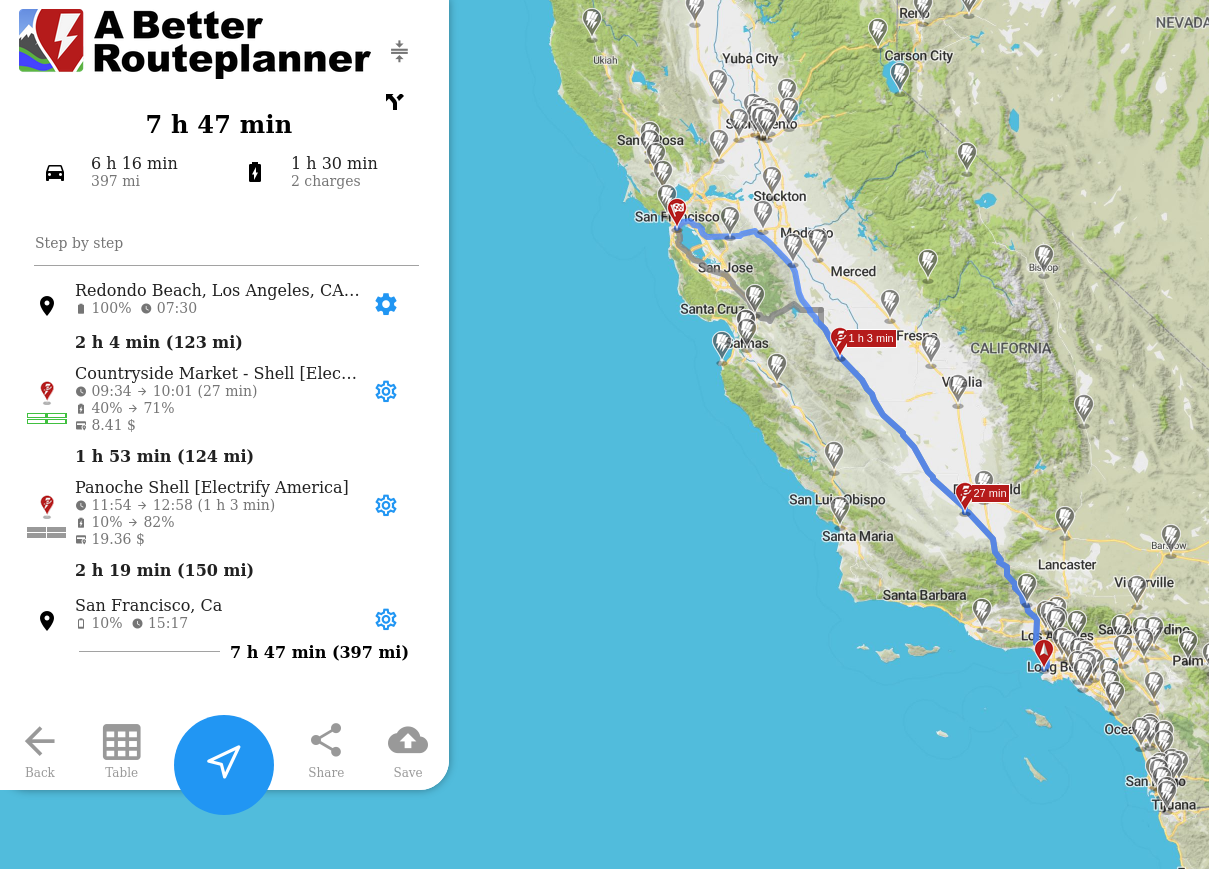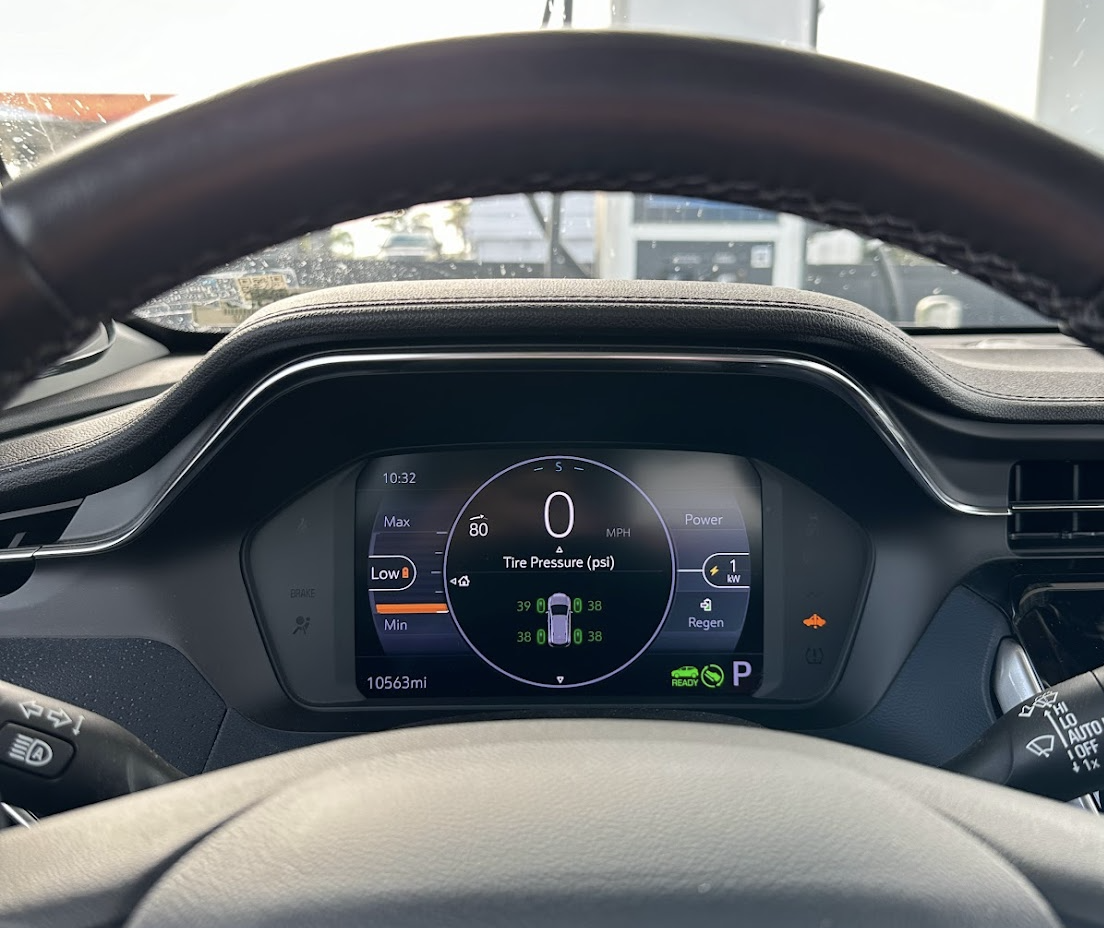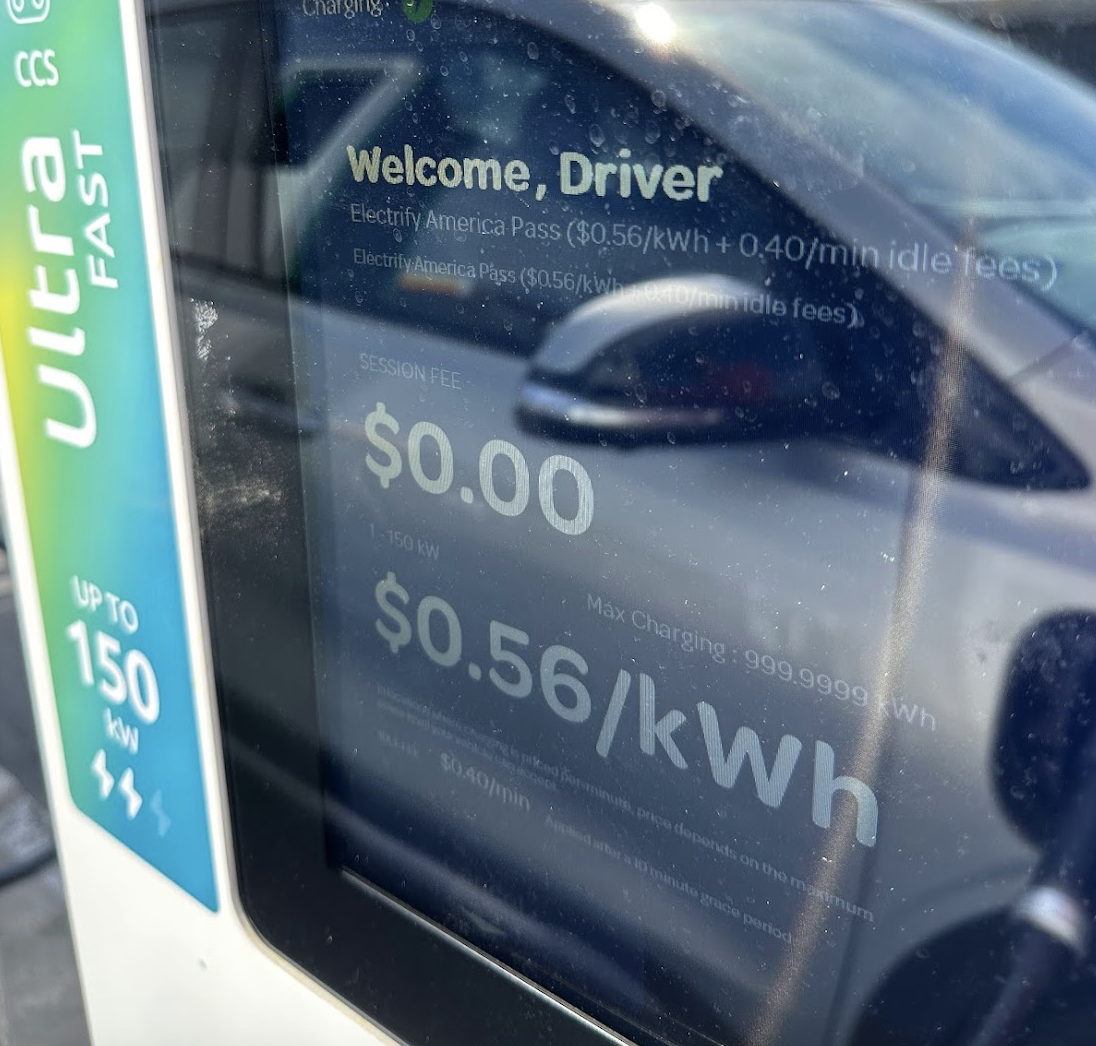Welcome the sequel! After nearly two years, I was back for more. Once again it was time to tackle the roadtrip I once called “honestly not as terrible as you’d expect”. Los Angeles to San Francisco on nothing but electrons and a prayer (for no lines at EA chargers). For the original trip, check out part 1.

The Car
Some of you may recall that the Chevy Bolts of yore had a special feature that caused them to set spontaneously ablaze while charging. Partially thanks to GM, but mostly thanks to California’s progressive consumer protection laws, I was able to swap out my cute starter Bolt EV LT for the mature and sophisticated Bolt EUV Premier. The new car has been nothing but good to me so far, but unfortunately the extra mass combined with the same battery means range is reduced, approximately 20 miles EPA estimated. Charge rates are the same 55 KW, which is slower than basically any modern EV.
The Trip
The route for this trip is nearly the same as last time, tackling nearly 400 miles mostly on the I5. Here are the overall stats for my trip:
Total milage: 380 miles
Total time: 8 hours 17 minutes
Average highway speed: 77 mph
Average driving efficiency: 3.3 mi/kWh
Average outdoor temp: 69 degrees
I stopped twice, for 34 minutes and 1 hour 10 minutes respectively. Usually I try to setup my charging so the first one is quick and the second one is longer and overlaps with lunch. Since I was traveling on a weekday, the roads weren’t busy save a few semis trying to pass each other. The worst traffic I hit was entering SF across the bay bridge and it was maybe an extra five minutes.
Infrastructure
While the trip is the same, a lot has changed in two years for the EV driver. There has been significant development on the charging infrastructure for this route, and while this sounds like it should make the trip easier it’s counteracted by the large increase in EVs on the road. I (along with many others) have observed that the number of cars has grown faster than the number of chargers for most non-Tesla networks. This has the potential to lead to one of the most frustrating electric road trip outcomes — waiting in line to charge.
This was a serious concern for me on my trip, so I purposely elected to make the drive early on a Tuesday, and luckily this seemed to work out. I didn’t have to wait for any chargers, although I did get the last spot at one location. However, having to wait for a spot can easily add half an hour to any stop, and if you’re unlucky enough to get stuck behind another slow charging Bolt it can be even longer. When many locations only have two to four charging bays, it’s easy to imagine that during the holidays a stop could take hours. Don’t forget to check ahead of stopping that your station has working and open chargers!
Tesla seems to have figured this out. Many of the charging locations I stopped at also had supercharger locations nearby, and the difference in investment is painful even just at a glance. Where Electrify America (EA) might have three spots, Tesla would have upwards of 50. Supposedly Tesla will be opening up its network to other cars, and while I’m excited about this personally, if I owned a Tesla I’d be pissed if a bunch of Chevy Bolts were about to start eating up an hour charging time each at the superchargers.
Charging
While on my previous trip prices to charge varied widely, many networks have moved to simplified pricing models. I charged at EA chargers for both stops, and they charge a flat rate per kWh which is perfect for my slow charging Bolt that used to sometimes get charged per minute.
The first charger I used was a well outfitted EA station in a sea of gas stations. There were at least 8 stations here, including one with an F150 lightning charging off a 350 KW bay (neat!). Unfortunately, there wasn’t much to actually do in this location, since literally the only things open within walking distance were gas stations and fields. I opted to do a short charge and go for longer at the following stop.
Charging Time: 34 minutes, Cost: $15.12

Once you’ve taken enough trips like this you start to recognize the charging station names like old friends. Panoche Shell is one of the classics, just off the 5 and favorite recommendation of ABRP. Since this trip overlapped with lunch I went to a nearby casual burger place to eat, and then hung out for another 15 minutes on my laptop. When I went to leave, a man charging next to me who spoke no English used his Google translate app to ask me why his charge was so much more expensive than mine. I’m assuming my flustered description of kHw didn’t do a great job of explaining what was happening, but this does show an important education point — understanding how the pricing system works isn’t necessarily straightforward.
Charging Time: 1 hour 10 minutes, Cost: $27.44
Conclusions
The obvious elephant in the room here is the cost.
Maybe due to California’s local “privatize the gains” utility PG&E raising their rates massive amounts for homeowners, prices are much higher than I paid last time I took this trip. The total trip cost last time was $27.02, while this time it was $42.56! Combine that with home charging to go from 10% to 100% at $16.83 with PGE, and you’re looking at $59.39 for a one way trip.

Using the average gas price at the time of writing ($4.59) and a 30 mpg car, this is actually more expensive than the $58.16 in gas you would pay! Plus in a gas car you’d get there an hour faster at least depending on how quick you eat lunch. This is actually quite egregious in my opinion — I understand fast chargers aren’t cheap, but at least it was previously possible to point to the cost benefit even if charging took longer when potential EV owners asked about road trips.
Hopefully competition will lower charging rates once Tesla opens up their charging network but I’m not holding my breath. Until next time, enjoy living the life electric!